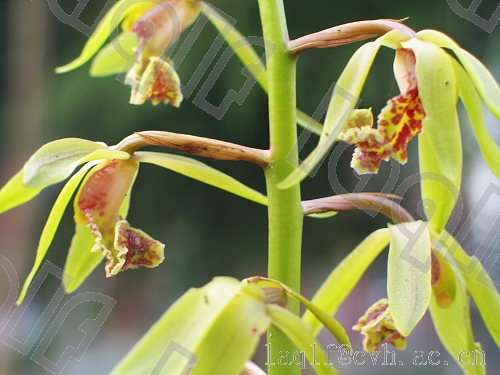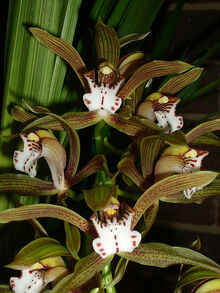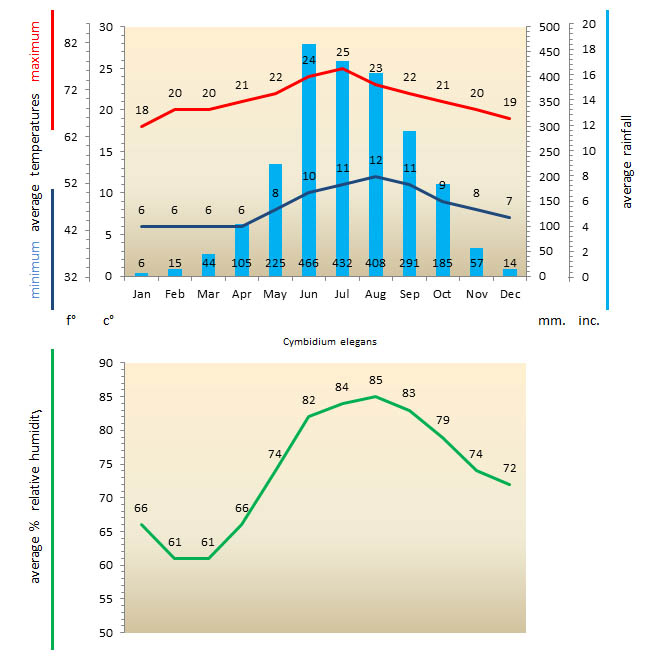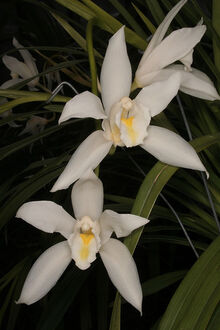| Cymbidium hookerianum | |
|---|---|
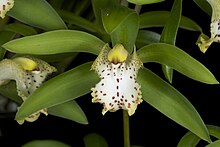 | |
| Scientific classification | |
| Kingdom: | Plantae |
| (unranked): | Angiosperms |
| (unranked): | Monocots |
| Order: | Asparagales |
| Family: | Orchidaceae |
| Subfamily: | Epidendroideae |
| Tribe: | Cymbidieae |
| Subtribe: | Cyrtopodiinae |
| Alliance: | Cymbidium |
| Genus: | Cymbidium |
| Species: | C. hookerianum |
| Binomial name | |
| Cymbidium hookerianum Rchb.f. (1866) | |
Cymbidium hookerianum H. G. Reichenbach, Gard. Chron. 1866: 7. 1866.
虎头兰 hu tou lan
Cymbidium giganteum Wallich ex Lindley var. hookerianum (H. G. Reichenbach) Bois; C. grandiflorum Griffith; Cyperorchis grandiflora (Griffith) Schlechter.
Plants epiphytic or lithophytic, autotrophic. Pseudobulbs narrowly ellipsoid to narrowly ovoid, bilaterally flattened, 3-8 × 1.5-3 cm, partially enclosed in leaf bases. Leaves 4-6(-8), lorate, 35-60(-80) × 1.4-2.3 cm, articulate (4-)6-10 cm from base, apex acute. Inflorescence arising from near base of pseudobulb, arching or suberect, 45-60(-70) cm; rachis 7-14-flowered; floral bracts ovate-triangular, 3-4 mm. Flowers slightly fragrant, 11-12 cm in diam.; pedicel and ovary 30-50 mm; sepals and petals apple-green or yellowish green with a few deep red spots or occasionally tinged pale reddish brown at base; lip white or cream-yellow with chestnut spots and striations on lateral lobes and mid-lobe, becoming purplish red following pollination. Sepals suboblong, 50-55 × 15-17 mm, apex acute. Petals narrowly oblong-oblanceolate, 50-55 × 10-13 mm, apex acute; lip subelliptic, 45-50 mm, base fused to basal margins of column for 4-4.5 mm, 3-lobed; lateral lobes erect, ciliate; mid-lobe recurved, margin erose and undulate; disk sparsely minutely papillate or puberulent and densely so toward apices of lateral lobes, with 2 shortly hairy lamellae extending from base of lip to base of mid-lobe. Column arcuate, 33-40 mm, papillate or puberulent near base on ventral surface; pollinia 2, subtriangular. Capsule narrowly ellipsoid, 90-110 × ca. 40 mm. Fl. Jan-Apr, fr. Jun-Aug. 2n = 38*, 40*.
Trees in forests, rocks along valleys; 1100-2700 m. S Guangxi, SW Guizhou, SW Sichuan, SE Xizang, Yunnan [Bhutan, NE India, Nepal, N Vietnam].
References
1. Ref 1
2.Ref 2
3.Ref 3


